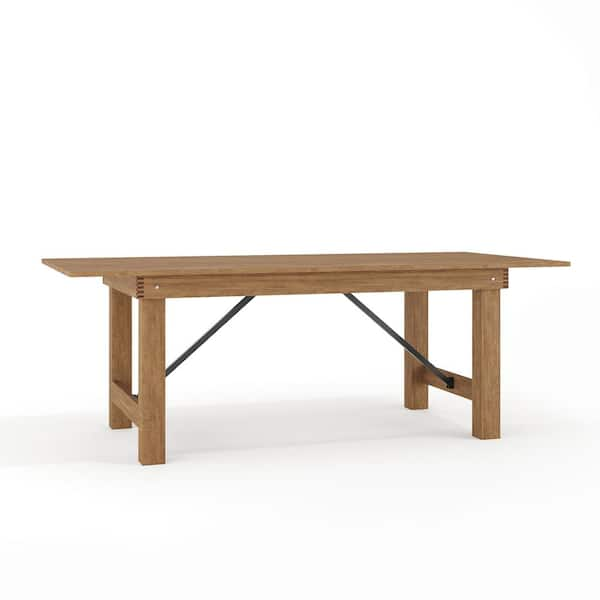Trick Aspects to Keep in Mind for Table Legs Timber Choices
When choosing timber for dining table legs, a number of vital variables call for careful consideration to make sure both performance and visual charm. The choice of wood kind, identified by its toughness and distinct grain patterns, plays a crucial function in the overall layout and longevity of the item. Furthermore, one must consider upkeep demands and the environmental ramifications of sourcing products. As these elements link, they dramatically influence the last end result of your dining table. Nonetheless, comprehending the subtleties of each aspect can be complex, resulting in vital decisions that warrant further exploration.
Wood Kind and Qualities
When choosing wood for dining table legs, it is necessary to comprehend the special features of various timber kinds. Various timbers provide unique advantages and downsides, affecting both the resilience and aesthetic appeal of the finished product.
Oak, understood for its impressive durability, likewise includes a prominent grain that can include personality to the table. Cherry timber, with its rich shade that grows over time, offers a lavish look however may require more upkeep to stop scratches.
On the other hand, softwoods like pine and fir are more inexpensive and easier to deal with, yet they are less resilient than woods. Pine is lightweight and features a warm, rustic look, making it a favored option for casual dining setups. However, it is more at risk to scrapes and damages.
Understanding these features will aid in making an informed decision to ensure the legs of the eating table fulfill both functional and visual requirements.
Grain Patterns and Aesthetic Appeal
The timber's grain is not merely an aesthetic feature; it imparts an one-of-a-kind personality and charm to each piece. Various timber varieties display distinct grain patterns, ranging from the straight lines of maple to the elaborate swirls of oak and the striking number of walnut.
Additionally, the orientation and range of the grain can affect the viewed size and beauty of the table. Larger, a lot more pronounced grains might offer a strong, significant impact, while finer, subtler grains can produce a refined, downplayed appearance. Furthermore, the finishing procedure can additionally improve these patterns, emphasizing the natural beauty of the wood and highlighting abundant shades.
Inevitably, the option of grain pattern should harmonize with other layout elements, such as the table top and bordering furnishings, guaranteeing a cohesive aesthetic that raises the dining experience. Thoughtful option of wood grain not only contributes to the table's beauty but also mirrors the owner's taste and design.
Longevity and Stamina
The longevity and toughness of dining table legs are vital considerations for ensuring long life and stability in any kind of eating room. Picking the best wood is important, as various types show varying degrees of durability.

Inevitably, purchasing high-grade wood and durable construction methods will certainly produce an eating table that stands the examination of time, while offering a reliable structure for plenty of meals shared among More Help friends and family. Prioritizing durability and toughness ensures that your dining table stays functional and visually pleasing for several years ahead.
Upkeep and Treatment
Correct maintenance and treatment are vital for maintaining the toughness and toughness of dining table legs made from wood. Regular cleansing is vital; using a soft, damp cloth ensures that dirt and particles do not accumulate, which can bring about scrapes and dullness. It is recommended to stay clear of extreme chemicals or rough materials that can damage the finish.
Furthermore, using an ideal timber polish or wax occasionally can help preserve the sheen and safeguard the wood from dampness and spills. Nonetheless, it is important to adhere to the supplier's referrals relating to the kind of product to utilize, as specific coatings may respond detrimentally to certain chemicals.
Moisture and temperature changes can also affect wood table legs, creating them to warp or fracture. It's ideal to put the table far from straight sunlight and warm resources. If the table legs have any type of dents or Get More Info scratches, resolving these without delay can stop more damage.
Last but not least, regularly evaluating the joints and screws for tightness is necessary to maintain architectural honesty (Dining Table Legs Wood). By adhering to these maintenance methods, homeowners can ensure their wooden dining table legs remain functional and appealing for years to find
Ecological Factors To Consider
When choosing wood for dining table legs, it's important to take ecological factors to consider into account. The sourcing and sustainability of wood are critical in reducing ecological effect. Choosing wood from certified sources, such as those recommended by the Forest Stewardship Council (FSC), ensures that the timber is collected sensibly, promoting woodland preservation and biodiversity.

Additionally, regional sourcing of wood minimizes transport exhausts, sustaining neighborhood economies while minimizing environmental learn this here now effect. It is also advisable to be knowledgeable about the timber's treatment and completing procedures, as particular chemicals can be hazardous to both human health and the setting. By focusing on sustainable wood choices, customers can add to environmental preservation while enjoying the resilience and charm of their table legs.
Conclusion
In verdict, picking timber for eating table legs necessitates mindful consideration of various aspects, including wood kinds, grain patterns, and resilience. Upkeep requirements and ecological sustainability more impact timber options, stressing the significance of sourcing from licensed or reclaimed products.
When selecting timber for eating table legs, several essential elements call for mindful consideration to make certain both functionality and aesthetic charm.Proper maintenance and care are essential for protecting the sturdiness and toughness of eating table legs made from timber.When selecting wood for eating table legs, it's essential to take environmental considerations right into account. By prioritizing sustainable wood choices, consumers can contribute to environmental conservation while appreciating the durability and beauty of their dining table legs.
In final thought, picking timber for eating table legs demands cautious consideration of different elements, consisting of timber kinds, grain patterns, and longevity. Dining Table Legs Wood.